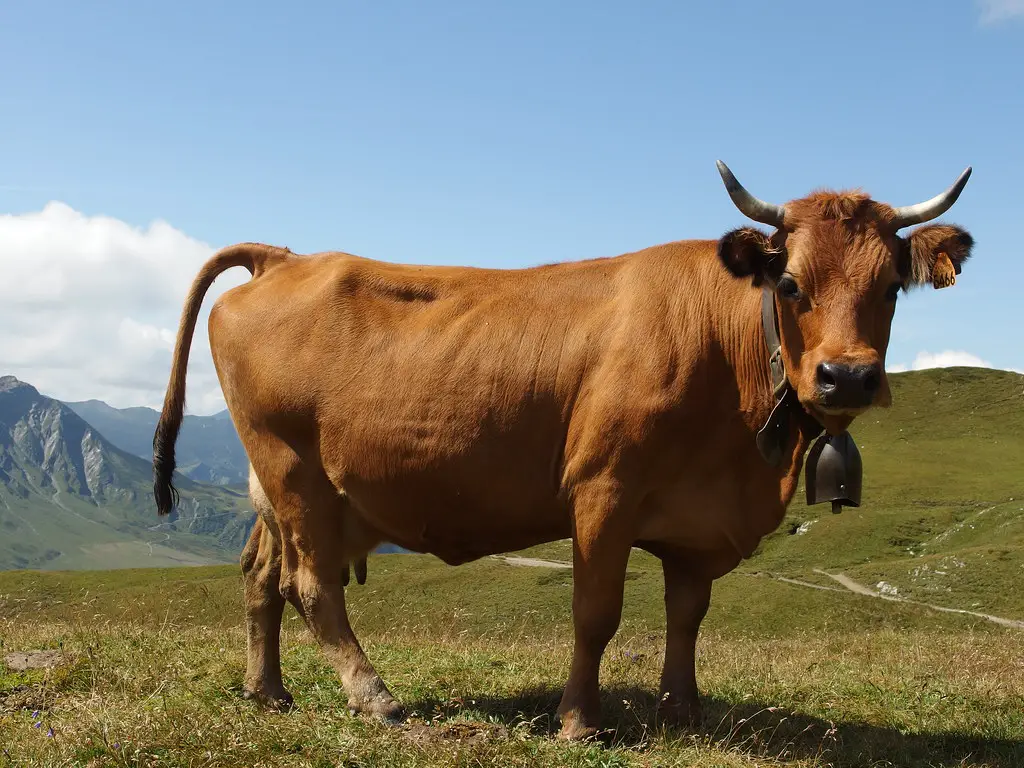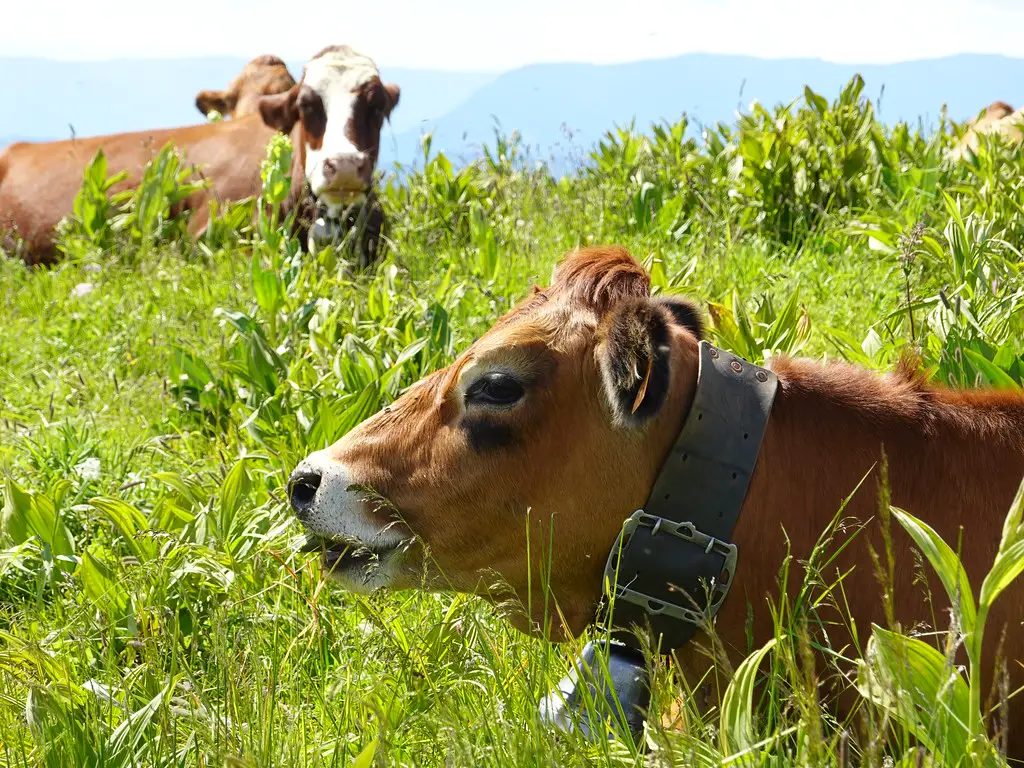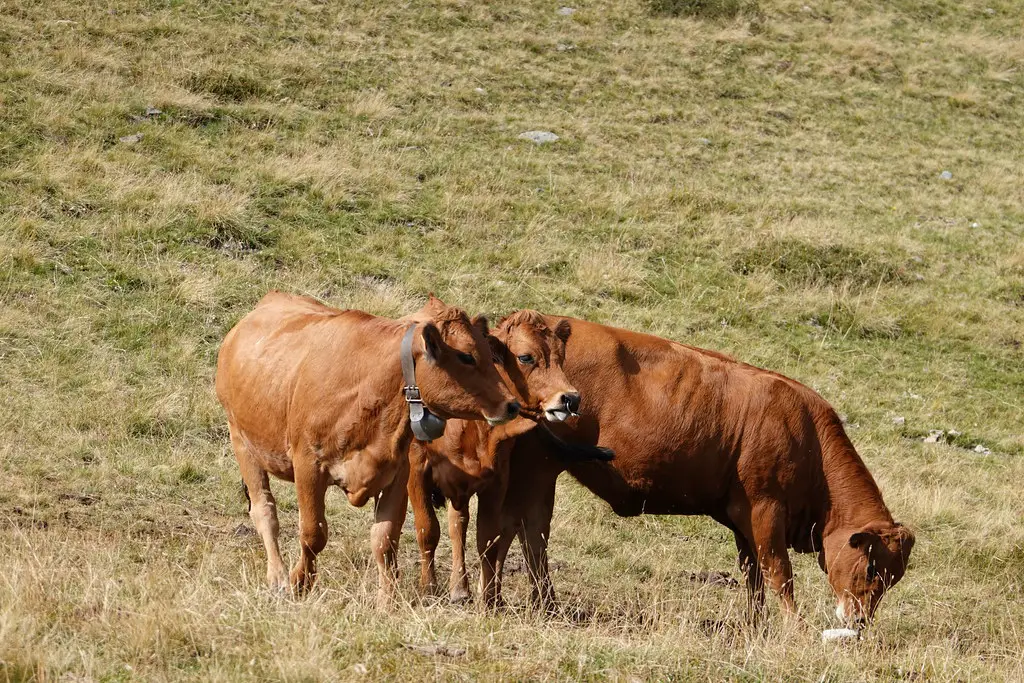
Tarentaise Cattle! If you’re looking for a cattle breed that combines hardiness with excellent milk and meat production, the Tarentaise might be just the ticket. Originating in the rugged French Alps, this adaptable breed is gaining popularity worldwide. But before you rush out to find some Tarentaise calves, let’s dive into their history, traits, and the pros and cons of raising them.
Origin
The Tarentaise breed hails from the Tarentaise Valley in the Savoie region of the French Alps. Their history in this harsh mountain environment shaped them into the resilient and efficient cattle we know today. Tarentaise were used for centuries as triple-purpose animals, valued for their milk, meat, and ability to work as draft animals.
Characteristics
- Appearance: Tarentaise stand out with their sleek, wheat-colored to reddish-brown coats. Their mucous membranes (nose, eyes) are dark, giving them a striking appearance.
- Temperament: This breed is known for its docility and ease of handling. Tarentaise are generally calm and cooperative, making them a pleasure to work with.
- Adaptability: The Alpine environment bred hardiness into the Tarentaise. They tolerate various climates well, from hot summers to cold winters, and are remarkably good foragers.
Tarentaise Cattle: Pros
- Excellent Milk Production: Tarentaise cows are known for their good milk yields. Their milk is high in protein and butterfat, making it ideal for cheesemaking.
- Calving Ease: Farmers appreciate Tarentaise cows for their unassisted calving. This means less intervention and healthier calves.
- Strong Maternal Instincts: Tarentaise are protective mothers, ensuring their calves thrive.
- Longevity: This breed enjoys a long productive life, with cows often calving well into their teens.
- Crossbreeding Success: Tarentaise genetics can enhance other breeds, improving milk quality, maternal traits, and hardiness.

Tarentaise Cattle: Cons
- Availability: Tarentaise can be harder to find than some mainstream breeds, depending on your location. Your search might take a little more effort.
- Growth Rate: Some Tarentaise lines might mature at a slightly slower rate than specialized beef breeds.
FAQ
- What are Tarentaise cattle used for?
- Tarentaise are a versatile breed. Historically, they were triple-purpose (milk, meat, draft). Today, they’re primarily used for dairy and beef production. Their crossbreeding value is also significant.
- What are the disadvantages of the Tarentaise cow?
- The main disadvantages are their relative scarcity (depending on your location) and the fact that some may mature a bit slower than breeds selected solely for rapid beef production.
- How big are Tarentaise cattle?
- Mature cows typically weigh between 1200-1400 lbs, while bulls range from 1800-2200 lbs.
- Are Tarentaise cattle polled?
- Yes, Tarentaise are naturally polled, meaning they do not grow horns.
Tarentaise Cattle Characteristics Table
| Characteristic | Description |
|---|---|
| Mature Cow Weight | 1200-1400 lbs |
| Mature Bull Weight | 1800-2200 lbs |
| Milk Production (per lactation) | Approximately 16,000 lbs |
| Calving Ease | Excellent (high rate of unassisted births) |
| Temperament | Generally docile (Scale of 1-5, with 5 being very docile) |
Why Consider Tarentaise Cattle?
Let’s make those pros and cons more tangible, especially if you’re deciding if Tarentaise are right for you:
Pros (Expanded)
- Milk for Cheesemaking: If you’re into artisan cheese production, Tarentaise milk is a dream – high protein, great flavor profile.
- Low Maintenance Calving: Fewer calving problems mean less stress for you, healthier calves, and potential labor savings.
- Adaptability = Resilience: Whether you’ve got scorching summers or lots of snow, Tarentaise handle it well, reducing weather-related losses.
- Longevity = Savings: Cows lasting 12+ years gives you excellent returns over their lifetime.
Cons (With Solutions)
- Finding Breeders: A bit more research might be needed, but breed associations (Example: American Tarentaise Association: [invalid URL removed]) can help!
- Finishing Time: If rapid weight gain is crucial, you might combine Tarentaise with a faster-growing beef breed in a crossbreeding system.

Conclusion
Tarentaise cattle truly offer a unique blend of hardiness, maternal excellence, and quality milk and meat production. If you value adaptability, longevity, and want a breed that’s a bit off the beaten path, Tarentaise are definitely worth serious consideration.
Have you had any experience with Tarentaise cattle? We’d love to hear your thoughts and stories in the comments below!
